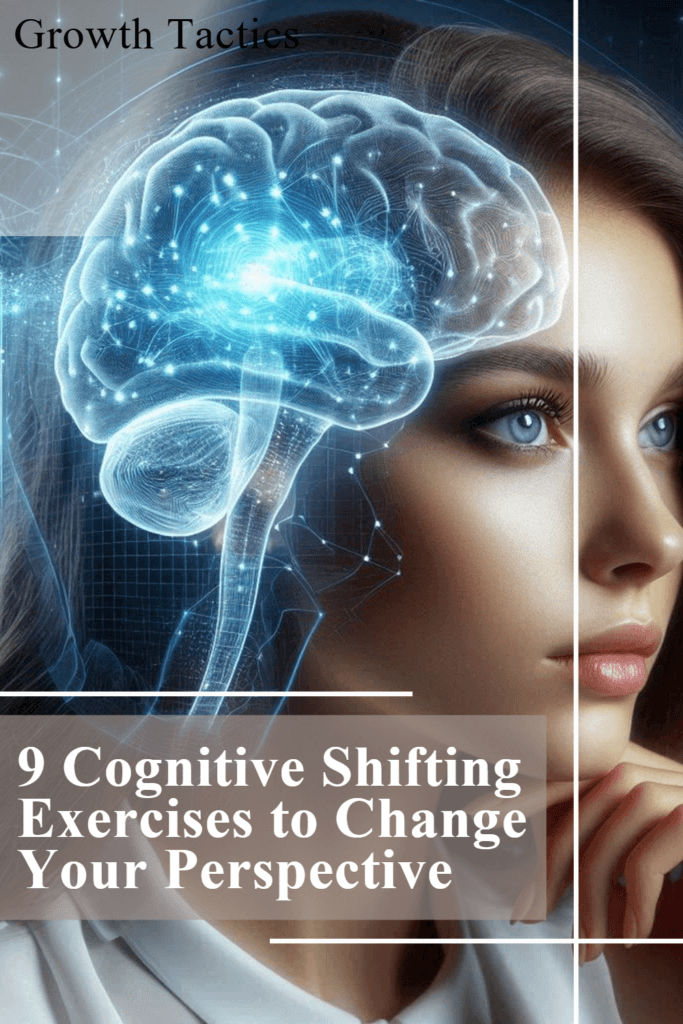Ever felt like you’re stuck in the same train of thought? That’s where cognitive shifting comes in. It’s like a secret tool for your mind that helps you see things differently. Imagine standing in a room and only looking through one window. Cognitive shifting opens all the windows, giving you new views and ideas.
I’ve seen how powerful these exercises are. When I started using them, my problems didn’t look so scary anymore. In fact, I found new, exciting solutions I never thought of before. Ready to change your perspective and unlock some fresh thinking? Let’s explore these cognitive shifting exercises together.
Jump To Section
What is Cognitive Flexibility and Why is it Important?
Have you ever wished you could adapt to changes better? That’s where cognitive flexibility comes in handy. It’s your brain’s ability to switch between different thoughts or think about multiple things at once. Like a gymnast who can easily move from one routine to another. That’s flexibility in action.
Cognitive flexibility is key because it helps you handle new situations and unexpected problems. When life throws a curveball, flexible thinking helps you catch it. Without it, you might feel stuck or overwhelmed. Everyone’s got their own way of thinking, and cognitive flexibility helps you find the best way for you.
Understanding Cognitive Flexibility
Let’s break it down. Cognitive flexibility involves two main skills:
- Shifting Perspectives: This means looking at a problem from different angles. You see more solutions.
- Adapting to Change: When plans change, cognitive flexibility helps you adjust without stress.
I’ve seen people use these skills to manage their busy lives better. When my schedule changes at the last minute, I use cognitive flexibility to rearrange my day without feeling frazzled.
The Role of Cognitive Flexibility in Problem-Solving
Problems are part of life. But how we approach them can make all the difference. Cognitive flexibility turns you into a better problem-solver. Instead of getting stuck on one solution, you think of many options. This way, you pick the best one for the situation.
Take a time when I had a project at work with a tight deadline. The original plan didn’t work out. Instead of getting stuck on the original plan, I quickly pivoted and brainstormed new ideas. We ended up with a better solution and met our deadline.
How Cognitive Flexibility Affects Executive Functioning
Executive functioning is like the control center of your brain. It manages your thoughts, actions, and emotions. Cognitive flexibility plays a big part here. It helps you switch tasks, manage goals, and stay focused.
For instance, when juggling work and personal life, cognitive flexibility helps you prioritize what’s important. When my priorities shift, I use these skills to stay on track and balanced. This way, I ensure that I’m not just working hard, but also smart.
What are Effective Exercises to Improve Cognitive Flexibility?
Building cognitive flexibility takes practice, but the benefits are huge. You’ll find you adapt to changes better and solve problems more creatively. Let’s look at some practical exercises you can try today.
Daily Exercises to Strengthen Cognitive Flexibility
These activities fit easily into your daily routine. They sharpen your mind and keep you mentally agile.
1. Change Your Routine: Try taking a different route to work or rearranging your schedule. Small changes help your brain think differently. I remember switching my morning jog route and noticing new things in my neighborhood.
2. Learn Something New: Pick up a new hobby or skill. Whether it’s cooking a new recipe or learning a musical instrument, new activities challenge your brain. I took up painting and found it helped me think in fresh ways.
3. Switch Hands: Use your non-dominant hand for daily tasks like brushing your teeth or using your computer mouse. It feels odd at first, but it forces your brain to adapt.
Creative Thinking Activities for Mental Agility
Fuel your creativity with exercises designed to make you think outside the box.
1. Mind Mapping: Start with a central idea and branch out with related thoughts. This helps you see connections you might’ve missed. I use mind mapping for brainstorming and it’s amazing how many ideas come out.
2. Free Writing: Set a timer for 10 minutes and write whatever comes to mind. No filters, no judgment. This frees up your creative thinking process. I’ve found it great for breaking through writer’s block.
3. Role-Playing Scenarios: Imagine yourself in different situations or roles. This helps you approach problems from various angles. Whether it’s acting as a CEO or a chef, you’ll discover new perspectives.
Puzzles and Games that Enhance Flexibility
Games aren’t just fun. They’re a powerful way to boost cognitive flexibility.
1. Sudoku: This number puzzle challenges you to think logically and spot patterns. I do one puzzle a day and it keeps my mind sharp.
2. Crossword Puzzles: These enhance your vocabulary and challenge you to think of words in different contexts. It’s like a brain workout. I solve a crossword puzzle with my morning coffee.
3. Strategy Games: Games like chess or checkers require you to plan ahead and adapt strategies. Playing these games can improve your decision-making skills. I play chess with friends, and it’s always a refreshing mental exercise.
By incorporating these exercises into your routine, you can strengthen your cognitive flexibility. Remember, it’s all about finding what works best for you. Start today and notice how your thinking expands and adapts.
How to Overcome Challenges in Cognitive Flexibility?
Every person faces roadblocks. The key is overcoming them with purpose and action. Let’s explore the obstacles and solutions to enhance your cognitive flexibility.
Identifying Common Challenges in Cognitive Flexibility
Recognizing your hurdles is the first step to overcoming them. Here’s what you might face:
1. Resistance to Change: Change is hard. I remember struggling when we had a complete shake-up in our organizational hierarchy but I used my flexibility to adapt to changing policies and leadership. Like any muscle, flexibility strengthens with use.
2. Rigid Thinking: Fixation on one approach limits you. There are many things I’ve thought could only be done a certain way but others have opened my eyes to better approaches.
3. Stress and Anxiety: High stress levels make adaptability harder. I find it difficult to switch gears when stressed. I manage this by taking short breaks to recharge.
4. Fear of the Unknown: Venturing into new territory can be daunting. I remember when I held my first meeting as a new supervisor and it was terrifying. But facing that fear has made me more adaptable.
Strategies for Adapting to New Situations
Tackling new situations requires a toolkit of strategies. Here’s what helps:
1. Stay Open-Minded: Embrace different ideas. When my team wants to try a new project tool, I jump right in. Some of them have been really great at streamlining our processes.
2. Practice Mindfulness: Be present to reduce stress. I use deep breathing exercises in high-pressure moments. It keeps me grounded.
3. Seek Feedback: Don’t hesitate to ask for input. When I face tough choices, I reach out to colleagues and team members. Their perspectives often reveal unseen options.
4. Break it Down: Tackle big changes in small steps. When learning to use new software, I focused on one feature at a time. It made the process manageable.
5. Continuous Learning: Acquire new skills regularly. I look for new ways to improve my skills every day. It not only expands my knowledge but also my flexibility.
Building Resilience Through Flexible Thinking
Resilience and cognitive flexibility go hand in hand. Here’s how to fortify your mind:
1. Embrace Challenges: View them as growth opportunities. Each challenge is a chance to learn and improve.
2. Reflect on Experiences: Take time to analyze what worked and what didn’t. I keep a journal to reflect on my daily encounters. It’s been a valuable tool for growth.
3. Develop a Growth Mindset: Believe in improvement through effort. I once avoided large presentations, but with practice, I’ve become more comfortable and confident.
4. Foster Self-Awareness: Understand your triggers and responses. Knowing your strengths and areas for growth helps you plan better.
5. Cultivate a Support Network: Surround yourself with positive influences. My mentors and peers have been instrumental in my journey. They provide guidance and encouragement.
By recognizing the obstacles, deploying effective strategies, and building resilience, you can enhance your cognitive flexibility. Remember, the goal is to find what works best for you. Embrace each challenge with purpose and keep pushing your boundaries.
Benefits of Cognitive Shifting Exercises
Engaging in these exercises can:
1. Improve Problem-Solving: When you shift your thinking, you see problems from different angles. I remember a time when I was stuck on a work project. By changing my perspective, I found a solution that I hadn’t seen before.
2. Enhance Creativity: New ideas come easier when you break free from rigid thinking. I used to struggle with coming up with creative ideas. Practicing cognitive shifts helped me see opportunities everywhere.
3. Reduce Stress: Adaptability lessens the pressure. During tough times, I rely on shifting my mindset to stay calm and focus on solutions rather than problems.
4. Boost Resilience: Flexibility in thinking builds strength. The ability to pivot has made me more resilient in facing setbacks and bouncing back stronger.
Integrating Cognitive Shifting Into Daily Life
Here’s how you can make cognitive shifting a habit:
1. Reflect Regularly: Spend a few minutes each day reflecting on your thought patterns. I keep a journal to track my shifts in thinking and progress.
2. Embrace Change: Welcome new experiences. Trying new hobbies or routines can improve your ability to adapt. I took up hiking, which challenged me to adapt to varying terrains and weather conditions.
3. Encourage Feedback: Ask for input from others. Their perspectives can help you see things differently. I often seek feedback from colleagues and friends to broaden my understanding.
4. Stay Mindful: Practice mindfulness to stay present. This helps manage stress and improves focus. I use deep breathing exercises to stay in the moment and reduce anxiety.
5. Learn Continuously: Always seek new knowledge. Taking online courses or reading widely can expose you to diverse ideas. My recent course in coding opened up new ways of approaching problems.
Conclusion
Changing your perspective isn’t just a nice idea. It’s a game-changer. By practicing cognitive shifting exercises, you can break free from old patterns and discover new paths. Remember, it’s about finding your own way and seeing things with fresh eyes. Embrace these exercises and notice how your world starts to change.
Take that step. Start today. Your new perspective awaits.


